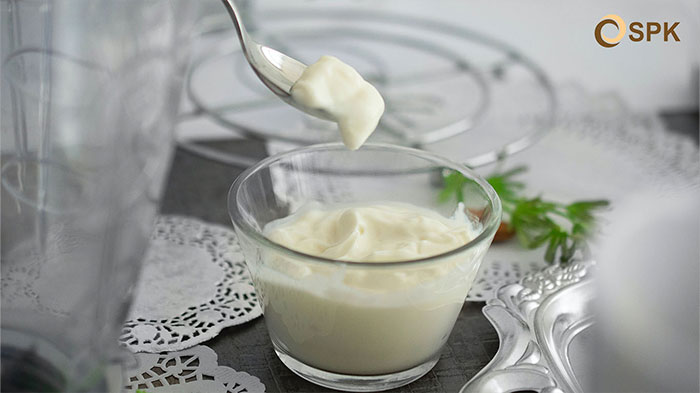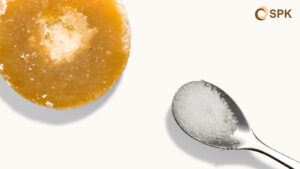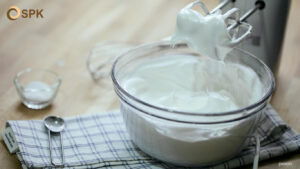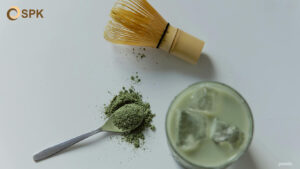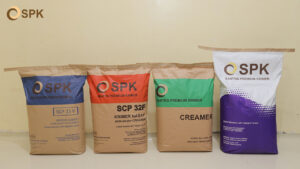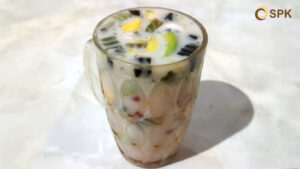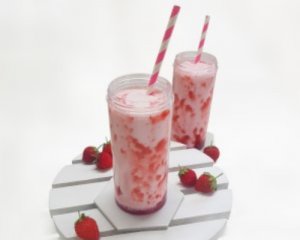Fermented milk is a milk derivative product. This fermented food or drink made from milk is known to have existed since 10,000 years BC and can be found all over the world under different names.
Fermented milk is made by fermenting milk using lactic acid bacteria (lactobacilli, etc.) or yeast (kefir, etc.). The fermentation process in milk increases its shelf life and makes the milk easier to digest. The fermentation process will break down milk protein and lactose. This is good for those who have lactose intolerance or milk protein allergies.
Fermented milk is known to have many health benefits. The probiotic content in fermented milk products is known to be very good for maintaining and improving the health of the digestive tract. Fermented milk can also help reduce weight because it reduces the absorption of cholesterol by the body. This can also affect heart health.
Following are several types of fermented milk that we know.
- Yogurt
Yogurt is milk fermented with yogurt culture bacteria (Lactobacillus delbrueckii or Streptococcus thermophilus). The word yoğurt comes from Turkish. Yogurt itself is thought to have been discovered 5,000 years before Christ in the Neolithic era by people in Central Asia and Mesopotamia, when livestock were first domesticated. It is possible that yogurt was originally formed from milk that was fermented spontaneously by wild bacteria in goatskin drink bags. Yogurt is a food commonly found in Central Asia, Eastern Europe, Central Europe and India.
Yogurt is made by mixing milk with bacterial cultures at a warm temperature of 30-45°C which is maintained for 4-12 hours so that the fermentation process takes place. Yogurt has a slightly thick consistency and has a refreshing original sour taste. Yogurt that is strained will produce a much thicker yogurt which we usually know as Greek yogurt. To enjoy yogurt, it can be consumed directly or mixed with other food ingredients.
- Dahi
Dahi is a traditional yogurt originating from India. Dahi is generally made from cow’s milk, but sometimes water buffalo or goat’s milk is used. The process of making dahi begins with making the starting ingredients by mixing boiled milk with dried chilies and leaving it at a warm temperature for 5-10 hours. It is said that dried chilies are rich in lactobacilli bacteria. The rest of this mixture can be used to make the next forehead as long as the taste has not turned bitter. Dahi can then be used to make various types of dishes.
- Kefir
Kefir is the result of fermented milk (cow, goat or sheep) fermented with kefir yeast. Traditional kefir is fermented at varying temperatures and left overnight. Milk that has been mixed with kefir yeast is put into a goatskin bag hung in front of the door. Passersby would hit the bag to mix the kefir yeast and milk. The result of this fermentation is a carbonated, slightly alcoholic, sour drink with a more liquid consistency than yogurt.
This drink comes from the North Caucasus mountains, to be precise, it was discovered by people living at the top of the mountains in the Karachay and Balkaria regions. From there kefir became known to Russia who then spread it throughout the world. The word kefir is thought to come from the Old Turkish köpür and has been known in Russia and other Eastern European countries since 1884. Kefir is usually consumed for breakfast, lunch and dinner in western Eurasian countries.
- Skyr
Skyr is a fermented milk that is a traditional Icelandic product. Skyr is made by mixing milk with an active bacterial culture to which rennet (an enzyme) is then added so that the milk emulsifies. The emulsified milk is then fermented for 5 hours and then cooled to a temperature of 18°C. The results are then filtered to separate the whey liquid. Bacteria play an important role in making skyr, but yeast that is active at low temperatures ensures the product becomes skyr, not yogurt.
Skyr has the consistency of Greek yogurt but with a milder taste. Skyr is usually consumed mixed with sugar or cream. Traditional Icelandic dishes generally consist of a mixture of skyr and porridge. Efforts to market skyr outside Iceland began in 2005 when skyr was first exported to the United States.
Fermented milk products originating from the same part of the world include filmjolk from Sweden and villi from Finland. What differentiates these products is the variety of bacteria and yeast used.
- Dadiah
Dadiah is a fermented milk product originating from West Sumatra. Dadiah is made by pouring fresh filtered buffalo milk into a bamboo tube which is then covered with banana leaves and fermented for two days. The lactic acid bacteria that play a role in the fermentation process come from buffalo milk, bamboo tubes or banana leaves.
Dadiah is usually consumed at breakfast along with ampiang (rice chips) and palm sugar. Dadiah is also usually consumed with warm rice, chili sauce, onions and betel. Betel functions to neutralize the sour or fishy aroma from the fermentation process.
Dadiah has a thick consistency because buffalo milk has a higher fat content than cow’s milk. The texture is soft with a sour taste. The longer the fermentation takes, the denser and harder the curd will be.
The examples mentioned above are various kinds of drinks or foods that come from fermented milk. If you want to try it, you can get fermented milk from the nearest minimarket or supermarket. To taste drinks that use milk as one of the components, you can try replacing it with creamer. Don’t forget to always use quality creamer products from Santos Premium Creamer for your memorable drinking experience.

